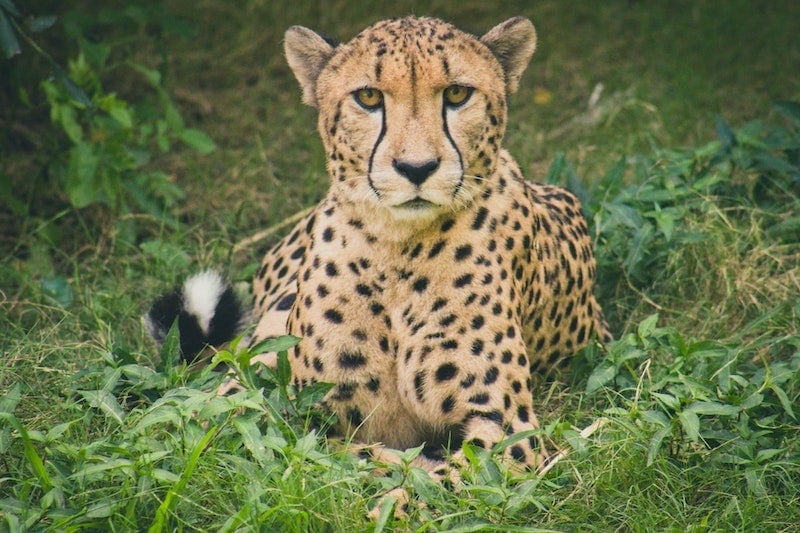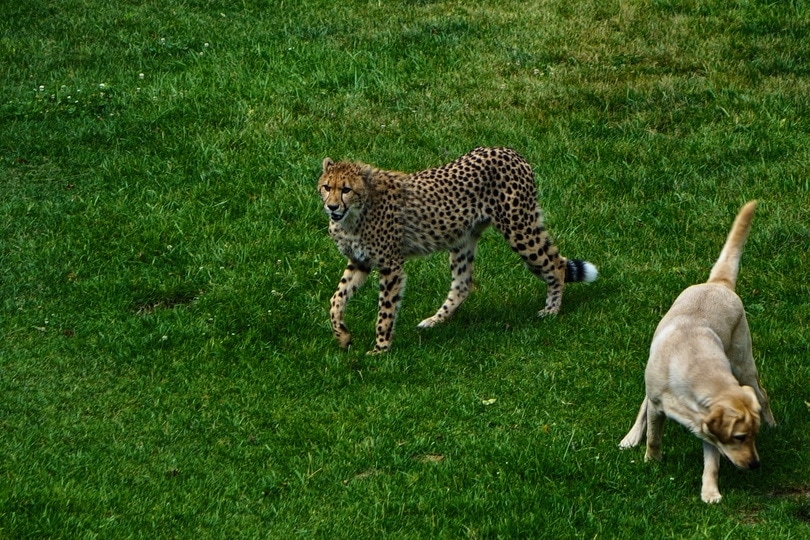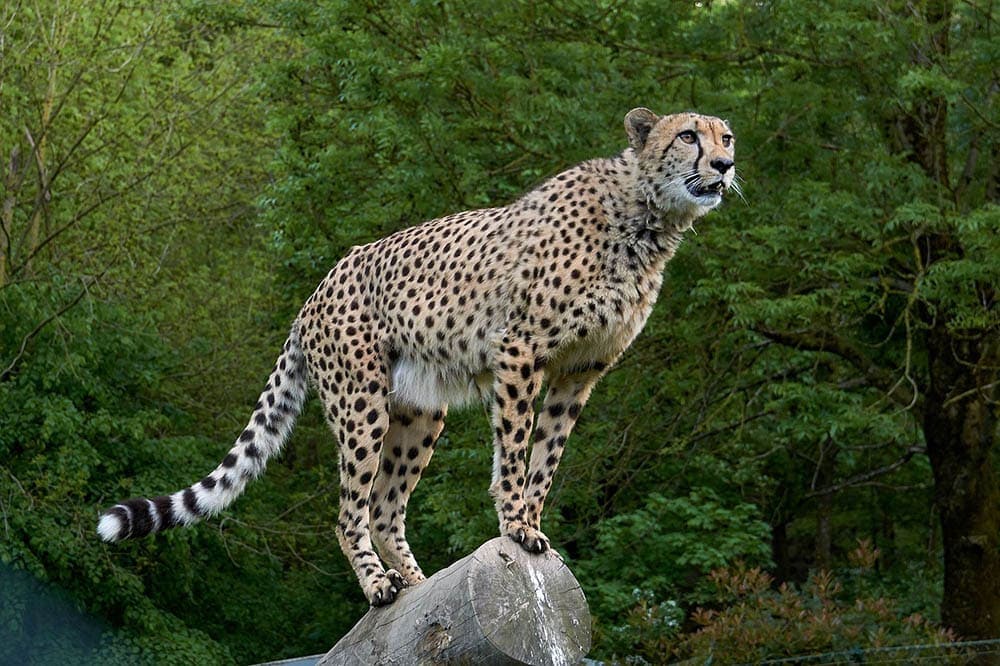You’re more than likely to think of a cheetah when you think of fast animals. These large, fierce African cats can run about 60 miles per hour, making them the fastest land mammals. However, that’s just it; cheetahs are considered “big cats,” so it’s only natural to wonder…do cheetahs purr like domestic house cats do?
The simple answer is yes; cheetahs do purr. Like your average house cat, purring is integral to a cheetah’s well-being and benefits them in many ways!

Why Do Cheetahs Purr?
To put it simply, purring is a fluttering sound specific felids make. The tonal noise is often accompanied by the vibration of the cat’s body and sounds different with each type of cat you hear it from. Just like any other house cat, a cheetah may purr for many reasons:
- Contentment – Any cat owner knows that a cat’s purr, accompanied by a relaxed body, generally denotes happiness. This is the same for a happy cheetah!
- Communication – A big part of communication between cheetahs is their sounds, which include purring. For example, a cheetah may purr as a way to request food from its mother in childhood.
- Relief – Research suggests that cheetahs, like many purring cats, may purr as a pain-relief mechanism. It’s theorized that the low-level vibrations from a feline purr stimulate their bones and muscles to help them grow, heal, or prevent atrophy. Purring may also ease a cheetah’s breathing.
- Bonding – A baby cheetah may purr to inform its mother of its whereabouts, well-being, or needs. A mother cheetah will often purr to soothe its young while they cuddle, almost equivalent to a human parent singing a lullaby.

Do Cheetahs Purr in the Wild or Only in Captivity?
Cheetahs purr both in the wild and in captivity. Purring is not a trait learned through human interaction but a natural trait that aids their species’ survival! Purring is used to communicate, soothe, and express a cheetah’s happiness. Since cheetahs are solitary animals (they don’t live in groups, as lions do), this communication and self-soothing technique leads to fewer conflicts when cheetahs interact. Purring is also helpful in keeping young cheetahs safe before they can fend for themselves, as their mother’s purr creates a sense of safety and trust, so they are less likely to wander off. A baby cheetah’s purr works similarly, allowing its mother to find them easier and be sure their child is still alive.
Can Cheetahs Roar?
Interestingly enough, Cheetahs actually cannot roar like lions or panthers. There are two different types of cats or “Felids”— “Felinae,” which are purring cats, and “Pantherinae,” which are roaring cats. They are divided based on a difference in their voice boxes. Felines have a voice box completely ossified or surrounded by bone tissue, which lets them purr. Pantherinae have voice boxes that aren’t entirely ossified, which allows them to make bigger, more powerful sounds like a classic tiger roar.
Are Cheetahs the Only Big Cat that Purrs?
Cheetahs are not the only “big cat” that doesn’t roar. As mentioned, cats are divided by “purring” and “roaring”; there are actually several other big cats that purr instead of roar. Leopards, bobcats, and cougars are examples of “purring cats” and they cannot roar. However, tigers, lions, and jaguars are “roaring cats” and cannot purr.
Interestingly enough, there is one exception to this rule—snow leopards are Pantherinae but have been observed purring.


Conclusion
Cheetahs purr like domestic cats do, which is completely to their benefit. This mechanism has been studied to have many benefits and is a critical practice for maintaining a cheetah’s health. They communicate, soothe, and bond with each other through purring, so really, it’s a purr-fect survival trait.
Featured Image Credit: Glavo, Pixabay
